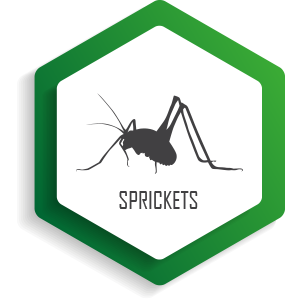The skin is the piece of your body that typically gets the most openness when you handle pesticides. Cover however much of your skin as could reasonably be expected. Recall that individual defensive hardware safeguards you provided that the pesticide stays outwardly of the material. When the pesticide gets within and close to your skin, the material neutralizes you. It holds the pesticide firmly close to your skin however long it is worn. At the point when this occurs, more pesticides will get on your skin and cause disturbance or will go through your skin and into your body. BPC Pest Control shows the safety issues to the user before using pesticides.
Body Protection
Any time you handle pesticides, wear essentially a long-sleeved shirt and long-legged jeans. In many occurrences, the pesticide naming will expect you to wear a coverall, a substance-safe suit, or a synthetic-safe cover.
![]()
Long-sleeved shirts and long-legged jeans – Long-sleeved shirts and long-legged jeans ought to be made of strong material. Attach the shirt neckline totally to safeguard the lower part of your neck.
Coveralls;
Coveralls ought to be made of a durable material like cotton, polyester, a cotton-engineered mix, denim, or a non-woven texture. While wearing a coverall, close the opening safely so the whole body except the feet, hands, neck, and head are covered.
While dealing with pesticides that are exceptionally or decently poisonous dermally or are skin aggravations, think about wearing a coverall over one more arrangement of the dress. A whole arrangement of dress, for example, a long-sleeved shirt and long-legged jeans are worn under the coverall is great. Continuously read the pesticide mark before settling on conclusions about the utilization of coveralls or some other defensive gear. Assuming the pesticide name states explicit defensive apparel necessities, you should follow them.
Substance safe suit;
Some pesticide marking expects controllers to wear a synthetic safe suit. This typically shows that the pesticide is extremely dangerous, either for intense impacts or for deferred impacts, and that additional safety measure is important to keep the pesticide from getting on you.
On the off chance that you hope to be in a circumstance where a lot of pesticides could be saved on your dress, and assuming you will be in that particular situation for quite a while, think about wearing a substance safe suit regardless of whether the pesticide marking doesn’t need it. Under those conditions, even pesticides that are applied dry, like cleans or granules, can overcome common textures and mischief you.
Synthetic safe suits made of elastic or plastic frequently are alluded to as “rain suits.” They might be sold as one-piece coveralls or as two-piece outfits comprising of a coat worn over overalls. Synthetic safe suits made of covered non-woven texture for the most part are sold as one-piece coveralls.
Compound safe cover:
The pesticide marking might expect you to wear a synthetic safe cover while you are blending and stacking the pesticide and keeping in mind that you are cleaning pesticide hardware. Consider wearing a cover at whatever point you are taking care of pesticide concentrates. It will shield you from sprinkles, spills, and surging cleans and will safeguard your coverall or other apparel. Wear a cover over the coverall or long-sleeved shirt and long-legged jeans expected for application or other taking care of exercises.




